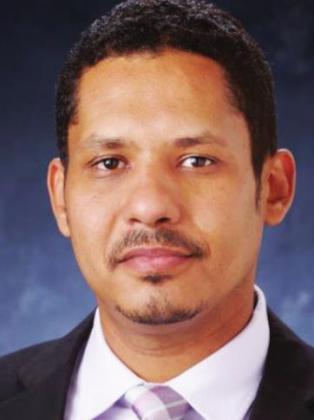AN INNOVATIVE DIAGNOSTIC TOOL at The University of Toledo Medical Center is helping doctors identify lung cancer earlier and with more precision, allowing for quicker treatment and improving the chances a patient’s cancer will be cured.
Lung cancer is the single deadliest form of the disease, accounting for nearly a quarter of all cancer deaths. “Most of the time lung cancer is detected at an advanced stage, limiting treatment options,” said Dr. Mohamed Omballi, an interventional pulmonologist at UTMC. “The key to improving survival rates is early diagnosis.”
Since March, patients at UTMC have had access to robotic-assisted bronchoscopy, a cutting-edge technology that enables physicians to biopsy lung nodules that were previously inaccessible or too small to reliably sample.
The minimally invasive procedure begins with detailed 3D imaging of a patient’s lung. Specially trained physicians then map out a path to the nodule and expertly guide a thin catheter along a pre-planned route with the added stability and precision provided by the robot. “Most nodules are small and in the periphery of the lung. The inside of the lung is like a maze. To have access to these nodules, or lung spots, you have to be very precise,” Omballi said. “Robotic bronchoscopy significantly improves our ability to diagnose or rule out cancer. UTMC is on the front edge of incorporating this technology into the clinic.” The new device at UTMC, which
The new device at UTMC, which is made by Intuitive, a global leader in robotic-assisted minimally invasive surgery, received approval from the U.S. Food and Drug Administration in 2019. Omballi said with a skilled operator, it can reliably biopsy nodules as small as 8 millimeters, significantly smaller than what’s possible using traditional navigational bronchoscopy.
The outpatient procedure, which is done under general anesthesia, takes about an hour. At UTMC, pathologists work alongside pulmonologists to provide rapid assessment of the tissue samples.
Medicare and Medicaid now cover yearly low-dose CT screenings for current and former smokers between 50 and 77 who smoked at least a pack a day for 20 years. With that expanded screening, Omballi said more nodules are being found.
While many of these abnormal growths are not cancerous, patients— even those at a higher risk for lung cancer—often have to take a waitand-see approach, returning every six to 12 months for another scan to look for changes or see if the nodule has become large enough to biopsy. The robotic bronchoscopy can eliminate that waiting game. “That can be very stressful for patients,” Omballi said. “This offers the peace of mind for the patient that we are able to diagnose smaller nodules earlier and save them the anxiety of waiting and not knowing what they have.”
The ability of the robotic bronchoscope to traverse difficult-to-reach parts of the lung also can reduce the need for aggressive surgical approaches that are sometimes required when nodules can’t otherwise be biopsied. “We’re implementing high-tech solutions at UTMC to diagnose cancer earlier and make cures more possible,” Omballi said. “The earlier we can find lung cancer, the better a patient’s prognosis. Lung cancer has poor five-year survival rates overall, but if found early enough, lung cancer is almost curable.”
Tyrel Linkhorn is a communications specialist at The University of Toledo.


